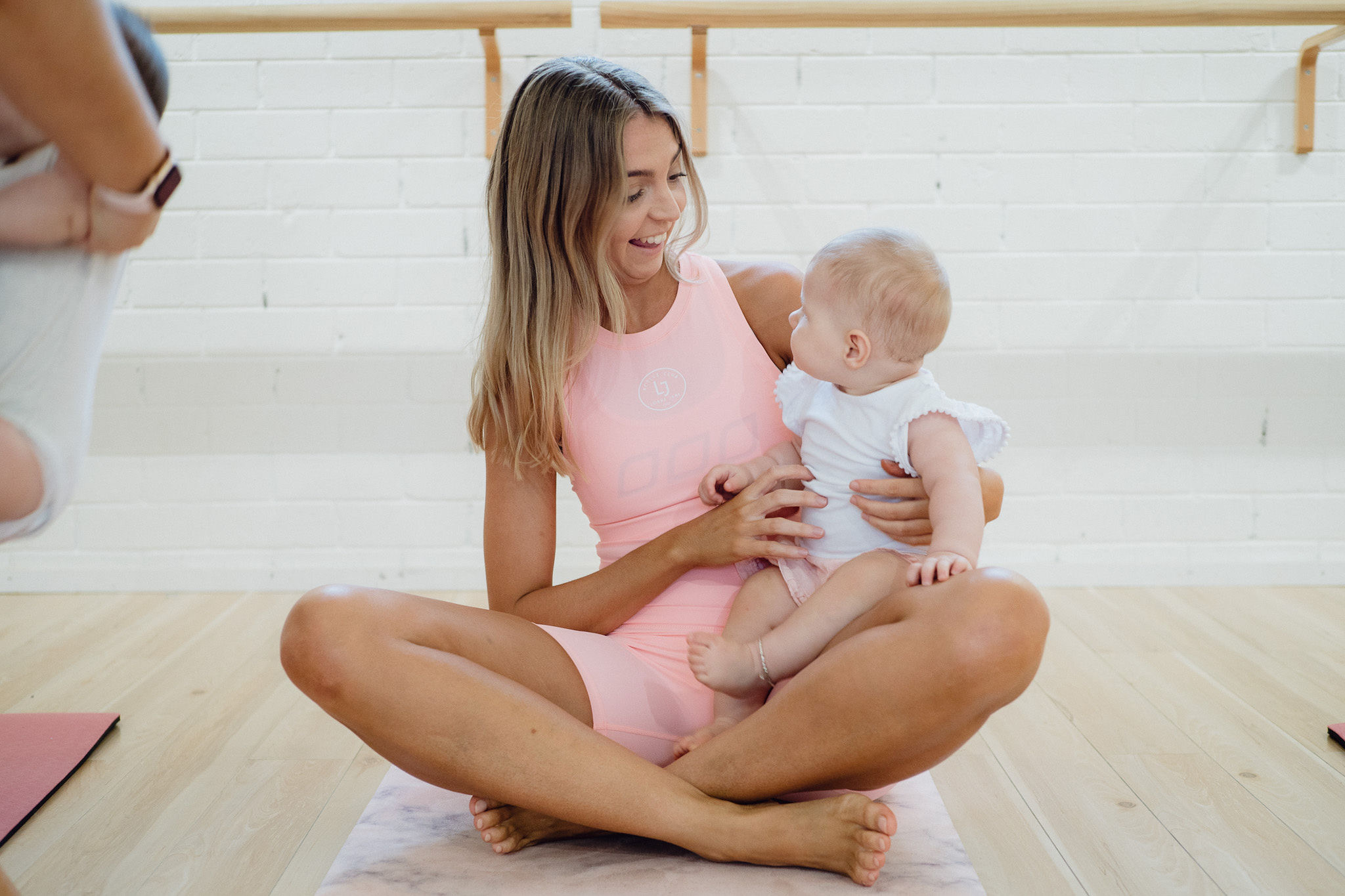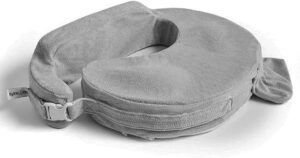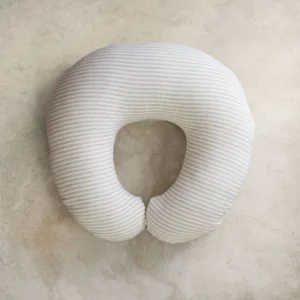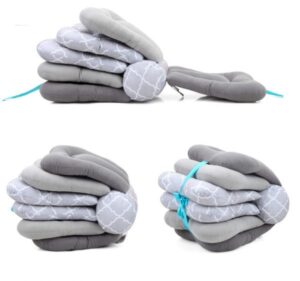Are you a new mum with upper back pain? You’re not alone!
This is a common issue that postpartum women have and we’ve got all the answers you’re looking for.

You’re dealing with so much right now – being sleep deprived and changing a million nappies, managing pelvic floor issues and so much more. It doesn’t seem fair but we’ve got to add upper back pain to that list for some too!
In this blog post, we’ll walk you through the causes of postpartum upper back pain and more importantly give you the tips you need on how to manage it.
This post is all about postpartum upper back pain.
Postpartum Upper Back Pain
What is postpartum upper back pain?
While it isn’t an official diagnosis it is a common complaint of many postpartum women. The upper back refers to the thoracic spine which is the part of your spine that starts at the base of your neck to the top of your lower back. It’s an area that is used to help you hold and carry things and even hold yourself up.
What causes it?
There are a few different reasons you could have postpartum upper back pain. Look through the list below and see if any of these might apply to you. We recommend to make sure you find the cause of your pain to see a professional.
Pregnancy
If you had upper back pain in pregnancy (which is also very common) then it is possible the same issues that caused that pain could carry on into your postpartum period. Especially if you weren’t able to address it during pregnancy.
Overuse
We often overuse this area when we have a new baby because we’re suddenly carrying this new weight for several hours of the day and to top it off- the baby keeps getting heavier! Imagine if you started carrying around a 5kg weight all day- that’s bound to make most people feel pain.
Feeding positions
To carry on the point of overusing the upper back in postpartum a prime time that this happens is when feeding (both breast or bottle feeding). If you don’t position yourself correctly with good support you’ll end up using your upper back muscles leading to you overusing them. If you can imagine if you’re not using the correct support every time you feed your baby that’s going to add up to A LOT of hours where you’re overusing your upper back muscles.
How to manage it?
Now for the part you’ve come for – the answers for how to fix it!
Professional help
Of course the first and best way to manage this is to seek help from a professional – either a doctor or physio.
It’s important to get it checked out so you can have it properly diagnosed. It can also be helpful to have a personal management plan created specifically for you. Also, if you see a physio they will possibly recommend manual therapy for treatment and that can go a long way in managing your symptoms.
Feeding position
As we mentioned above, if you’re feeding (several times and many hours of the day) in an incorrect position it’s likely you’ll end up overusing the muscles of your upper back, causing stiffness and pain.
So how do you get in the right feeding position? Firstly, using a nursing pillow is number one. They will help to support your baby and if used well you won’t have to do any of the lifting. There are many different nursing pillows out there to choose from.
We’ve included a few of our favs below for you to check out:
Mobility exercises
One of the main causes of the upper back pain you’re experiencing is likely from stiffness and little movement happening.
So much of your day involves you sitting and not moving your back much from nursing to settling your baby and to your well deserved rest! Unfortunately all of this (and more) adds up to very little movement happening in your upper back.
We need to get you moving this area as much as we can with you still being able to fulfill your duties as a new mum. I recommend:
- Get up and move when you can – after a feed when your baby is settled in their pillow or doing tummy time this is you chance to move!
- Add walking into your daily routine (remember to follow safe walking guidelines especially if you’re a very new mum. You can find this in a previous blog post here)
- Add a mobility exercise routine into your day to get the body moving
Here are some examples of mobility exercises you can start doing today:
- Child’s pose
- Thread the needle
- Cat/cow
- Bow & arrow
- Mermaids
For video examples of how to do these exercises check out the Postbump IG.
Strength exercises
Being a new mum and now having to carrying around your growing baby it’s likely that some of your pain is caused by not being strong enough. Getting stronger, especially in your upper back muscles will help you to carry your baby and prevent and manage upper back pain.
This is where adding upper back strength exercises into your routine or workout will come in handy. You’re probably wonder then, what exercises?
As you’ve only had a baby recently and likely not exercised much in a while you’re going to want to start small and progress slow.
For ideas for what exercises to do check out this list:
- Modified push ups (either on all fours or against a wall)
- Face pulls with a band
- Tricep kickbacks
- Bicep curls
- Standing row with a band
- Single arm bent over row (with a band or small weight)
For more ideas or examples of full workouts, check out the Postbump instagram page. We’ve got a catalogue of different workouts and upper body specific ones to get you started on increasing your strength.
How to prevent it?
If you’re super organised and want to learn how to prevent it or maybe you have a pregnant friend and you want to give her a heads up to prevent this- we’ve got the answers.
While there isn’t a sure thing we can say to prevent pain in your upper back postpartum there are some things that you can do to improve your chances.
The answers are similar to how you manage it. I would recommend doing these while pregnant or if you’re starting to try to get pregnant:
- Focus on strengthening the muscles of your upper back
- Include daily mobility exercises into your routine
- Make sure you’re frequently mobile- e.g. go on walks and avoid sitting too long
- If you notice pain or stiffness starting, address it immediately by following the steps above and seeing a professional for help. Better to get it sorted early!
Frequently asked questions
How long does it last?
This can depend on how long you continue doing the behaviours and actions that are causing the pain and how well you’re able to follow the treatment plan given by your physio or doctor.
Can breastfeeding cause upper back pain?
Yes, it can! As explained above, it can cause back pain if you aren’t in the correct feeding position and overusing your upper back muscles.
Is it normal to have upper back pain 6 months after delivery?
It’s not ‘normal’ but it is common. Meaning that while it often happens in postpartum women even at 6 months after delivery it’s something that you should address by seeing a professional.
Why is my upper back tingling postpartum?
This can be because the nerves in the area can be affected. Make sure you see a doctor or physio if you’re experiencing any tingling, numbness, pins and needles and a burning sensation.
Why does my back and rib hurt after child?
When it comes to postpartum upper back pain the issues causing the pain can also cause the same issues with the ribs. Because the ribs join to the thoracic spine they can also get stiff and painful and can even make it difficult to breathe.
So if you’re a new mum and you’re suffering from upper back pain, remember you’re not alone. There are things you can start today to help mange it like correcting feeding positions, adding mobility exercises into your daily routine and focusing on strengthening your upper back muscles. Remember to always seek professional help, they can give you an assessment and an individualised treatment plan.
I know this can be a really tough time in your life but you’ve got this!
If you want more help and guidance on all things postpartum check out this post here and follow us on Instagram
This post is all about postpartum upper back pain.





Comments +